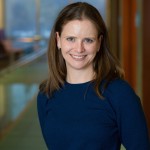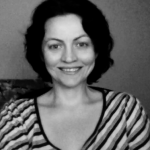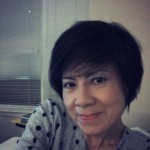By Gregory (“gz”) Zobel (USA), Elizabeth Lenaghan (USA), Sarah Honeychurch (Scotland), Robin DeRosa (USA), Christina V. Cedillo (USA), Maha Bali (Egypt)
Although some might argue community does not equate to learning, we claim just the opposite: community functions not as a methodological approach toward a set of outcomes but as the outcome in and of itself.
– Morris and Stommel (2013)
The Context & The Players
Recently, fifty-one people—including us—found themselves competing against each other for a job. In and of itself, this may not sound overly unusual, but there were a couple of unusual things about this particular competition. First, it was for a job that doesn’t pay a dime: an editorship at Hybrid Pedagogy, an online journal dedicated to exploring the intersections between critical and digital pedagogy. Second, the job interview was an online course with open elements. In this course (#hpj101), all potential editors shared communication, editing, and writing skills as they were evaluated by the journal’s directors and managing editor. Job offers would come at the end. Yet this is not actually a story about who received the final rose. This story is about how aspects of the course (alongside our participation in it) cultivated a sense of community (rather than competition) amongst us, so much so that we began collaborating on this piece mere hours after the course ended. So, in sharing the reasons we have collectively and individually identified as to why and how this sense of community was created here, we hope to provide educators and learners—particularly in online courses—with ideas for how to foster similarly enriching experiences.
What is Community?
What do we mean when we talk about community? Perhaps something like this from Wendell Berry:
“A community identifies itself by an understood mutuality of interests. But it lives and acts by the common virtues of trust, goodwill, forbearance, self-restraint, compassion, and forgiveness. If it hopes to continue long as a community, it will wish to—and will have to—encourage respect for all its members, human and natural” (Sex, Economy, Freedom & Community, Berry, 2000, p. 120).
The key themes that Berry identifies here are themes that have arisen regularly for us both during and after the course. Trust, goodwill, self-restraint, and compassion were all present; however, we believe that trust is the key factor that permitted the other dispositions to adhere.
Trust is especially important because community cannot rely solely on similarity or uniformity. Communities encapsulate diversity, too, and variation provides valuable learning opportunities for intellectual and emotional growth as we seek to bridge the gaps between one another. Even in the small group writing this piece now, we reflect a diverse cross-section of both the world and the academy, in terms of nationality, sexuality, gender, ethnicity, discipline, and academic rank, among other things. Trust allows us to make strategic use of our differences in perspective, experience, and standpoints as points of connection. As bell hooks explains, “Creating trust usually means finding out what it is we have in common as well as what separates us and makes us different” (hooks, p. 109).
Acknowledging the centrality of trust, as well as how it was cultivated throughout #hpj101, has been key to our emergence as a community of learners who feel enriched by the wealth of knowledge and ideas we can now access through this community.
Creating Trust Via Diverse Media
As hooks indicates, it was important for us to find out what we did and did not have in common in order to create trust. The conditions for such discovery were built into the prompts for our initial introductory posts within the course interface. Some of the prompts were:
- Don’t list your publications, your accomplishments as an editor, your credentials, or your pedigree, unless you can do so in a limerick.
- Don’t tell us where you live, unless you’re going to include images that will hold our fascination.
- Do tell us what moves you, why you care about students, what you love.
- Do give us random facts we can come to know you by.
- Do submit a video introduction using the nifty Record/Upload Media tool in the toolbar (looks like a bit of film).
Such guidelines facilitated our initial encounters in several ways. First, they required us to think outside the “standard biographical narrative” box and trust that communicating something of our emotional and ideological selves would provide more insight into us than any earned credentials. Second, they provided an impetus for play. Limericks and random facts helped us see new angles and points of connection. Finally, prompting us to create videos and employ images, they facilitated expression and interaction beyond alphabetic text. The guidelines’ spirit created plentiful opportunities for cultivating trust through identifying both common interests and uncommon beliefs and practices. Strangely for a job interview, we did not feel compelled to follow guidelines to the letter. Few of us actually did limericks; in fact, Maha didn’t know what a limerick was and didn’t try. She also didn’t create a video intro simply because she didn’t have the infrastructure to do so at home in Egypt, and used images and sound instead.
The multimodal nature of these introductions also set the stage for the variety of media and platforms in which discussion would take place both inside and outside the course interface over the course of the week. The course required us to connect in order to conduct mock collaborative reviews, but collaboration spilled out beyond that instrumental purpose. These collaborations took place on multiple channels and at multiple times since participants were literally spread around the globe (we here live in Cairo, Glasgow, Oregon, Texas, Illinois, and New Hampshire). Instead of only working in the Canvas platform, participants used Twitter (beyond the official course Twitter chats), Facebook, and email for many of their conversations, thereby cultivating community by inviting each other into pre-existing social media circles.
These conversations also helped uncover points of similarity/difference that bolstered our sense of community beyond the course. For example, several of us discovered that we shared a love of punk music, and we are now working on a collaborative project about how punk music has informed our respective critical pedagogies. Others of us, feeling at ease, acknowledged that we wished we knew more about particular theoretical topics and have established an informal Twitter discussion group.
Trust was also built within the course requirements by having smaller groups of participants (3-5 people) set out to work together to practice collaboratively editing a set of documents. This activity not only helped us to get to know a sub-set of people differently, but it also helped us to better understand the type of work that we would be engaged in as members of the Hybrid Pedagogy editorial community.
Once You Have Trust Flowing in Multiple Media Channels, Community is Easier
This collaborative atmosphere was further enhanced by the community building efforts of the extant Hybrid Pedagogy staff. Periodically, the #hpj101 facilitators were available on Twitter and Canvas, answering questions, offering direction, or clarifying any confusion, as well as engaging in discussion. Often present, too, were others from the larger Hybrid Pedagogy community such as authors or reviewers, who understood part of the processes; they were able to help explain some materials or answer some questions. Apart from offering clarification, Hybrid Pedagogy staff and writers appeared to work intentionally to ask questions for development of statements on Twitter and in Canvas, “What do you mean?” or “Could you say more on this?” kinds of prompts. In other cases, they worked to include or connect people making similar questions or comments either in the Canvas Forums or on Twitter. Such modeling helped to set the tone, a tone familiar to those interested in progressive education: making others feel welcome and connecting with each other. Thus, rapidly, a number of participants worked on sharing common threads that they saw in the comments and connecting people through their work and non-work related interests. These mixed interactions: synchronous/asynchronous, quiet/chaotic, personal/dispersed, clarifying/confusing, reassuring/risky: all served to build a coherent and strong community that was also creative and dynamic at the same time.
Closing the Door on Alphabetical Modality’s Domination
Community is a term that is bandied about quite regularly. We can’t afford to allow the term to go stale. Instead, we need to–no, we WANT to (and we hope you do too since you’re reading this article!) proactively create, nurture, support, and participate in multiple diverse communities (online and in person) because, as Berry, among many others, indicates, community has a vital role.
“The indispensable form that can intervene between public and private interests is that of community. The concerns of public and private, republic and citizen, necessary as they are, are not adequate for the shaping of human life.” (Sex, Economy, Freedom & Community, Berry, 2000, p. 119).
In other words, community is another way of thinking, being, seeing, and organizing together. It’s not fully public and it’s not private, either. Instead, it’s a bridge between the two. For a journal that works towards social justice and is based on critical theories and critical pedagogies, this is an important positioning. It’s important because aside from the direct work that the journal undertakes–publishing–around that work, social networks and communities (two different things) form. This means that the critical, social justice work is not going to be limited just to the journal topics or the content; instead, those involved with the journal are working to bridge and connect with the public and make those changes.
A Critical Note
We are aware of factors outside the official course design that contributed to community building: we all already had shared interest in critical digital pedagogy, and the journal Hybrid Pedagogy itself, and were likely to be open pedagogy advocates. Some of us already knew the journal closely (as writers, MOOC participants/facilitators) and some of us knew each other (from close friendships to merely following on Twitter). This meant there were power differences amongst us in the community, but because the nature of the course was collaborative, we were encouraged to support each other in areas in which some of us were more comfortable/familiar. For example, several participants mentioned to one of us that during #hpj101 they had thought she was already HP staff, rather than one participating to apply to be editor.
Several of us, being open educators, naturally took on facilitator roles, helping answer questions, welcoming others in, suggesting solutions to problems–all to build relationships and community. We recognized, for instance, that not all people were equally competent/comfortable with Twitter, Canvas, Google docs, etc. Not all people were equally comfortable using video and text. But this is also where the multimodality helped different people to shine in different spaces. For a journal that uses these tools in its activities, it was important for facilitators to see how potential editors would fare in various spaces.
Finally, we recognize that for some people, life got in the way of fully participating in the course’s community building. If someone was traveling or had a sick child during the particular five days when the course took place, they likely missed out on much of the activity. Those are the restrictions of any semi-synchronous online event. The facilitators expanded the course from its original length of two days to five, and intentionally scheduled Twitter chats at times workable for various timezones. This was accommodating on their part, but there is probably no solution that would work for every single person.
Having said all this: think about what a regular job interview is like. An hour, two? Three interviews over several days? Few job interviews will both build community and coach participants in the process of selection. We were able to relax, be ourselves, and show who we were and what we could do–all while enjoying each other’s company.
Not all of us became editors of Hybrid Pedagogy. But we are still in touch, right here writing this article, and planning on more. Those of us who did become editors feel like we hit the ground running. We already felt we were amongst “our people”.
Conclusion
By using multiple modalities and vehicles to build relationships among participants, by expanding upon and beyond alphabetic textual relations, we found that trust can be developed more quickly in some situations because multimodal communications let us see multiple facets of one another quickly and readily. And when we converse and share in semi-protected spaces, like moderated Twitter chats or forums, we get to see how others interact and thus help define what it means to be community members there and then.
One thing we did realize is that community is not one thing–it’s not a thing at all. It’s an ever-evolving process that shifts its shape as its members travel through and converse across its networks. In this sense, even this article is an extension and a new offshoot of our community. We welcome you to join us. Catch us on Twitter, or comment below, and be a part of where we go next!
About the Authors:
 Gregory ("gz") Zobel (@drgbz) is a budgie-loving bibliophile who teaches EdTech at Western Oregon University. He lives in a library in Oregon's Willamette Valley surrounded by iris and orchids. He is inspired by ravens, Gysin, Fanon, Lao Tzu, and Nutella. He blogs at http://zobelg.posthaven.com/. He is an editor at Hybrid Pedagogy
Gregory ("gz") Zobel (@drgbz) is a budgie-loving bibliophile who teaches EdTech at Western Oregon University. He lives in a library in Oregon's Willamette Valley surrounded by iris and orchids. He is inspired by ravens, Gysin, Fanon, Lao Tzu, and Nutella. He blogs at http://zobelg.posthaven.com/. He is an editor at Hybrid Pedagogy
 Elizabeth Lenaghan (@Lenaberts) is an Assistant Professor of Instruction in Northwestern University’s Writing Program, and she also serves as Assistant Director of Northwestern’s Writing Place. Her teaching and research combine her backgrounds in Communications and English Literature to explore the ways that new media impact literacy as well as our reception and production of “old media” such as printed books. She is an editor at Hybrid Pedagogy
Elizabeth Lenaghan (@Lenaberts) is an Assistant Professor of Instruction in Northwestern University’s Writing Program, and she also serves as Assistant Director of Northwestern’s Writing Place. Her teaching and research combine her backgrounds in Communications and English Literature to explore the ways that new media impact literacy as well as our reception and production of “old media” such as printed books. She is an editor at Hybrid Pedagogy
 Sarah Honeychurch (@NomadWarMachine) is a Learning Technology Specialist and Philosophy TA at the University of Glasgow in Scotland. She’s interested in how peer interactions stimulate learning and how educators can help facilitate that. Her blog is http://www.nomadwarmachine.co.uk. She is an editor at Hybrid Pedagogy
Sarah Honeychurch (@NomadWarMachine) is a Learning Technology Specialist and Philosophy TA at the University of Glasgow in Scotland. She’s interested in how peer interactions stimulate learning and how educators can help facilitate that. Her blog is http://www.nomadwarmachine.co.uk. She is an editor at Hybrid Pedagogy
 Robin DeRosa (@actualham) is Professor of English and Chair of Interdisciplinary Studies at Plymouth State University. An early Americanist by training, she now researches and writes about public university missions, OER, and open pedagogy. Her website can be found at www.actualham.wordpress.com. She is an editor at Hybrid Pedagogy
Robin DeRosa (@actualham) is Professor of English and Chair of Interdisciplinary Studies at Plymouth State University. An early Americanist by training, she now researches and writes about public university missions, OER, and open pedagogy. Her website can be found at www.actualham.wordpress.com. She is an editor at Hybrid Pedagogy
 Christina V. Cedillo (@DrCCedillo) is Assistant Professor of Writing at University of Houston--Clear Lake. Her research interests include embodied rhetorics and critical education, especially how these are influenced by race and gender, and access to technology.
Christina V. Cedillo (@DrCCedillo) is Assistant Professor of Writing at University of Houston--Clear Lake. Her research interests include embodied rhetorics and critical education, especially how these are influenced by race and gender, and access to technology.
 Maha Bali (@bali_maha) is Associate Professor of Practice at the Center for Learning and Teaching at the American University in Cairo. She is co-founder and co-facilitator of edcontexts.org, co-founder of www.virtuallyconnecting.org and columnist & editor at Hybrid Pedagogy. She’s a MOOCaholic, Writeaholic and passionate open and connected educator.
Maha Bali (@bali_maha) is Associate Professor of Practice at the Center for Learning and Teaching at the American University in Cairo. She is co-founder and co-facilitator of edcontexts.org, co-founder of www.virtuallyconnecting.org and columnist & editor at Hybrid Pedagogy. She’s a MOOCaholic, Writeaholic and passionate open and connected educator.
Like this:
Like Loading...










